The History of the Conboy Carriage Company
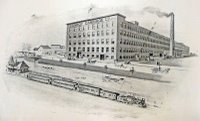
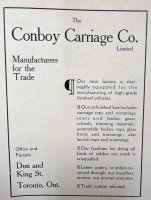
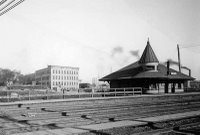 Click on each picture for a closer look!
Click on each picture for a closer look!.
Recently, Riverdale Historical Society President Gerald Whyte advised me that there was an interesting item in an old magazine in the Baldwin Room at the Toronto Reference Library. It was a 1906 ad in a glossy magazine supplement to the Mail & Empire newspaper, which later merged with the Globe.
.
The ad (from "Toronto the Prosperous". 1872-1906, Special number of the Mail & Empire, 1906, pages 176 and 177) is for the Conboy Carriage Company and features an engraving, as shown in the images at the upper left and in the upper middle, depicted a southbound Canadian Pacific passenger train departing from the Don Station for Union Station. The train and station are only foreground detail for the main subject of the ad, which is, of course, the carriage factory. Typical of advertising in that era, the perspective is greatly exaggerated; modest factory buildings were often transformed into vast industrial complexes. The people standing in front of the building are evidently taller than the locomotive in the foreground.
.
The Conboy Company made the transition from the horse and carriage era to the automotive era since they built composite bodies on Hudson and Rolls-Royce chassis. In the early years of the automotive industry, the purchasers of upscale automobiles often arranged to have the car bodies custom built for them by local firms. Conboy also built the first production bodies for McLaughlin-Buicks on the introduction of that car in Canada. The company evidently did not survive World War I, which curtailed automotive manufacturing in favour of the production of military materiel and vehicles. By early 1916, the building was described as an "unused factory". By the time the war was over, car companies had become much larger and automotive assembly lines handled the complete manufacturing process for their products.
.
The picture at the lower left shows the Conboy building in 1931 just before renovations began. The front of the Conboy building was gutted in 1931 and a new faintly Chicago Style facade was built facing the river. The picture in the middle below shows the Conboy building in 1931 while renovations were underway and after the new facade had been built. In the 1950s, the Don Valley Parkway was built between the factory and the river.
.
Anyway, back to railways! The perspective in the ad is looking northeast with Queen Street on the left crossing over the Don River. In 1911 a new higher level bridge was built to eliminate the level crossing and carry Queen over the river. There was a railway track running along the east side of the Don River although I can find no evidence that there was a siding for the Conboy Company on the south side of the building. The CPR passenger train is being hauled by a 4-6-0, a typical express passenger engine in 1906 that would in a few years be supplanted by the 4-6-2 Pacific as trains became longer and heavier. Behind the tender is an express car, a combine, a coach and a first class car of some kind, possibly a coach or parlor car.
.
The Don Station was actually closer to Queen Street than depicted here. It was moved to about where it's located in the ad in 1910 when the new bridge was built. The picture in the lower middle shows the Conboy Co. and the Don Station after the station was moved 100 feet to the south to permit construction of the new Queen Street bridge. Trundling along Queen Street can be seen a streetcar of the Toronto Railway Company, although the route names were not emblazoned on the sides. The King and Queen carlines merged just west of the Don River, as they still do today.
.
In the picture at the lower right, we see the former site of Don Station in 2009 from the Queen Street bridge. The station occupied centre view. The Conboy building is left of centre across the Don River.
.
Posting by Derek Boles, TRHA Hiostorian
.
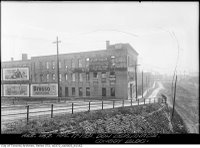
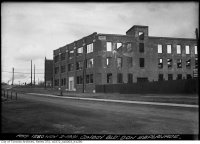
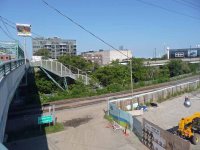






<< Home